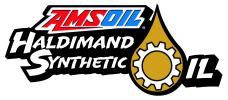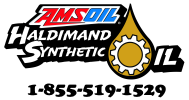
Fluid for complex transmissions
The complexity of today’s automatic transmissions can baffle even seasoned technicians. Modern transmissions feature more gears, clutch packs and narrow oil passageways that require a steady supply of high-quality fluid. Without it, performance suffers and failure can ensue, leading to thousands of dollars in repairs.
To make matters worse, towing and hauling capacities continue to increase despite transmissions often using less fluid than their predecessors. Maximizing transmission performance and longevity requires using premium synthetic fluids.
“The fluid doesn’t just lubricate, it acts as a hydraulic fluid to enable shifting,” said Matt Erickson, AMSOIL Product Manager, Passenger Car. “Transmission fluid is primarily designed for hydraulics, moving parts within a transmission to select gears via the valve body and solenoids. Fluid design has changed with the transmission, evolving to work with every transmission part, hard and soft.“ Fluids that oxidize can result in damaging sludge that clogs fluid passages and results in poor performance. Transmission fluid is also exposed to high levels of shearing as it is forced between gear teeth. This can quickly break down an inferior fluid, causing viscosity loss and reduced wear protection.”
Over time, transmission fluid deteriorates, especially if the transmission gets extremely hot from towing or hauling. Heat causes the fluid to oxidize, or break down. Well used fluid can fail to provide the correct frictional properties for your transmission. When this happens, should you just buy a bottle of transmission fluid additves? Do transmission fluid additives really work?
To demonstrate its robust nature in extreme environments, AMSOIL Signature Series Synthetic ATF was installed in a Las Vegas taxi cab that was operated for more than 180,000 miles on a single fluid change. Signature Series ATF delivered outstanding resistance to sludge and wear despite the intense desert heat and severity of operation. It helps motorists safely harness their vehicle’s full potential and delivers reserve protection against the devastating effects of heat. Because Signature Series ATF provides guaranteed protection for twice the original equipment manufacturer’s (OEM) severe-service drain interval, users can rest assured their transmissions are protected even if a fluid change is delayed due to a hectic schedule.
AMSOIL formulates a full line of synthetic automatic transmission fluids that meet the stringent demands of today’s transmissions, helping you get the most out of your vehicle.
AMSOIL Signature Series Synthetic Automatic Transmission Fluid
• Specifically formulated for severe-service towing and heavy hauling
• Delivers reserve protection against extreme heat
AMSOIL OE Synthetic Automatic Transmission Fluid
• Offers excellent wear protection and extreme-temperature performance for autos/light trucks
• Perfect for daily drivers who don’t require the reserve protection of Signature Series ATF
• Excellent wear protection, sludge resistance and extreme-temperature performance throughout original equipment manufacturer (OEM)-recommended drain intervals.
AMSOIL Signature Series Fuel-Efficient Synthetic Automatic Transmission Fluid
• Specifically formulated for severe-service towing and heavy hauling
• Delivers reserve protection against extreme heat
• A fuel efficient automatic transmission fluid recommended for GM, Ford and Toyota transmissions where lighter viscosity oil is required
• Recommended for vehicles requiring GM DEXRON® VI, Ford MERCON® LV and SP, Honda DW-1, Nissan Matic-S and Toyota WS fluid specifications.
AMSOIL OE Fuel-Efficient Synthetic Automatic Transmission Fluid
• Offers excellent wear protection and extreme-temperature performance for autos/light
trucks
• Perfect for daily drivers who don’t require the reserve protection of Signature Series ATF
• Excellent wear protection, sludge resistance and extreme-temperature performance throughout original equipment manufacturer (OEM)-recommended drain intervals.
AMSOIL Synthetic CVT Fluid
• Provides excellent wear protection in continuously variable transmissions
• Helps prevent belt and chain slipping
AMSOIL CVT Fluid offers a cost-effective, premium-quality alternative, saving you money. AMSOIL CVT Fluid offers premium protection and performance. It has been field- and lab-tested against the market leaders, with the results confirming its exceptional quality.
Transmission Fluid Evacuation Service (TSB)
There has been a recent trend toward use of fluid evacuation systems in the automatic transmission service industry in lieu of traditional transmission service methods. These systems are used to pump the old fluid out of the transmission and to refill with fresh fluid. This avoids dropping the pan and draining the unit which can be time consuming and messy. The use of this method to replace the transmission fluid is a clean, efficient, and safe way to remove hot oil from a transmission. The problem, however, is that often times it is mistakenly thought that this represents complete transmission service and that removal, and cleaning of the pan and inspection and servicing of the filter are unnecessary
Some people believe that all transmission filters are backflushed clean every time the vehicle is turned off. This is a major misconception. Three-quarters of all transmission filters today are not a simple screen, they are made of felt. A felt filter CANNOT be backflushed. Felt holds dirt particles within tiny pores in the felt. It will not wash out or flush out. If a felt filter becomes clogged it must be replaced. Clogged filters restrict fluid flow, which lowers pressure to clutches and bands. This can cause slippage and eventual burnout of the transmission.
Service manuals and textbooks on transmission service recommend that a transmission filter be inspected and replaced, if necessary, as often as every 15,000 miles (24,140km), for severe service such as city driving, desert (hot dusty) driving, extreme cold, frequent short trips, trailer towing, and delivery service. In normal operating conditions the manuals recommend to inspect and replace the filter at least every 30,000 miles (48,280km). Even the newer vehicles with 100,000 mile (160,934km) drive train service warranties, the manufacturer recommends filter replacement if the vehicle sees severe service conditions.
There have been an increasing number of instances surfacing recently regarding transmission failures shortly after an evacuation service, without filter removal. At the time of a fluid evacuation service, there is no way to know the condition of the filter and how clogged it may be. The filters job is to collect and hold contaminants, (dirt, metal filings, friction particles, etc.), and prevent these particles from causing malfunction in such components as electronic force motors and solenoids. Today's transmissions are far more susceptible to malfunctions caused by fine dirt contamination. Without servicing the filter, there is no way to know if the filter is clean of debris or nearing capacity. If the filter is nearing capacity, transmission failure may not be far off. This is also a sign that there may be other internal problems in the transmission. Recognizing these warning signs could eliminate major service later.
Most of the transmission failures after an evacuation service have occurred primarily on relatively high mileage transmissions that have not been serviced in some time. One reason for this is that the sludge and dirt buildup within the transmission will not completely be removed during the service. When the new fluid (which has detergent properties) is placed in the transmission, over days and weeks, the internal components begin to wash the insides of the transmission.
This sludge does finally work loose and settles in the transmission filter, clogging it up even further than it may have been before service. In these extreme cases, where service has not been performed in some time, changing the filter may not completely fix the problem. Some mechanics recommend a second service a few weeks after the first, replacing the filter again, which may be partially clogged due to the cleaning process in the transmission.
Even if the fluid evacuation method is desired to remove the used transmission fluid, the pan should be removed also, and an inspection should be made of the pan contents, fluid, and filter to determine the condition of the transmission. Aluminum filings in the pan or iron filings on the pan magnet are signs of internal wear and may give light to potential problems in the transmission. Transmission service is performed for preventative maintenance. Evaluating the overall condition of the transmission by removing the pan should be part of this preventative maintenance also.
The Filter Manufacturers Council urges everyone to dispose of all used filters properly.





 Canada
Canada United States
United States